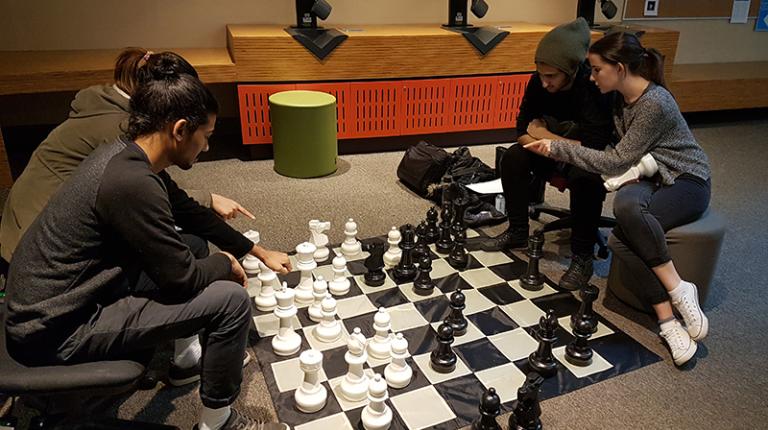All our courses are offered in an environment where individual success is the focus.
Our approach
Our teaching and learning features:
- the VU Block Model®, where small, focused classes lead to improved results
- work-integrated learning options
- tailored learning support
- flexible, supported pathways for students into and between a tailored range of courses
- courses with benefits such as overseas study opportunities, practical industry links and work integrated and problem-based learning.
Our vocational education programs (often referred to as TAFE) produce industry-focused, work-ready graduates with a wide range of national vocational education and training qualifications.
Purpose-built diplomas are also offered that pathway directly into bachelor degrees.
Our undergraduate degrees prepare students for careers in the private, public and not-for-profit sectors across a wide range of subject areas.
Industry-relevant postgraduate programs are designed to further careers by deepening or broadening areas of professional expertise.
Our research higher degree courses are seen as gateways to careers in research and development.
Science, technology, engineering & mathematics (STEM)
At Victoria University we are taking the national agenda for STEM education forwards, by working to provide students and teachers with:
- mathematical and statistical understanding and skills that are necessary for STEM
- qualified teachers of STEM subjects at all levels, especially primary and early years
- alignment with industry needs, including understanding new job opportunities in data management
- entrepreneurs who can translate scientific knowledge into businesses that create future jobs in our globally changing economy.
Our goals
- Strong mathematics skills: develop a cross-university strategy in mathematics to provide both refreshed mathematics tuition for students and realistic expectations on the part of staff.
- Trained teachers: enhance professional development activities in partnership with schools, particularly in STEM.
- Industry prepared students: develop explicit emphasis on skills, ways of thinking and knowledge to prepare students for the needs of industry.
- Engagement opportunities: create opportunities for external and entrepreneurial engagement with national STEM agenda and local initiatives.
Where are we now?
With students we have maths support workshops to enhance positive mindsets through attitude workshops, underpinned with identifying and promoting curriculum resources. We are mapping mathematics pre-requisites and requirements on a course-by-course basis to provide students with the best chance of reinvigorating their mathematical skills.
With schools and teachers we have technology workshops and links to Wyndham Tech School.
Within innovation and research we have:
- developed new mathematics teacher learning in schools and the STEM agenda
- the Early Learning STEM Australia project cataloguing STEM Apps on iPads for very young children (Department of Education, Government of Australia, Canberra) (contact Professor Nicola Yelland).
Practice-integrated learning
Our practice-integrated learning activities present a rich range of experiences and environments to engage students with practitioners, industry professionals, and in workplace and community settings. This style of learning is offered to students in all of the University’s undergraduate courses.
Practice-integrated learning includes:
- Work/industry placements: students work in business, government or community organisations.
- Problem-based learning: students work in groups to identify what they need to learn to solve a problem. They conduct research, integrate theory and practice, and apply knowledge and skills to develop a viable solution. The teacher becomes a facilitator of the learning process rather than providing the knowledge
- Industry or community projects: individual students or student teams undertake a project based on a problem or need encountered by a business or community organisation
- Workers as learners: the primary role of the learner is worker rather than student, and includes apprenticeships, traineeships, cadetships and workplace learning
- Simulated workplace environments (real and virtual): these are designed to reflect a real workplace, such as hospital wards, fitness training studios, training restaurants, moot courts and virtual businesses
- Project-based learning: learning is organised around projects that involve students in the design, implementation, problem-solving and decision-making.


